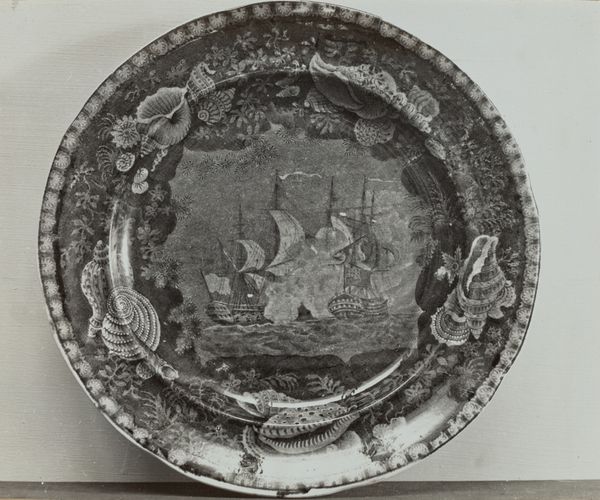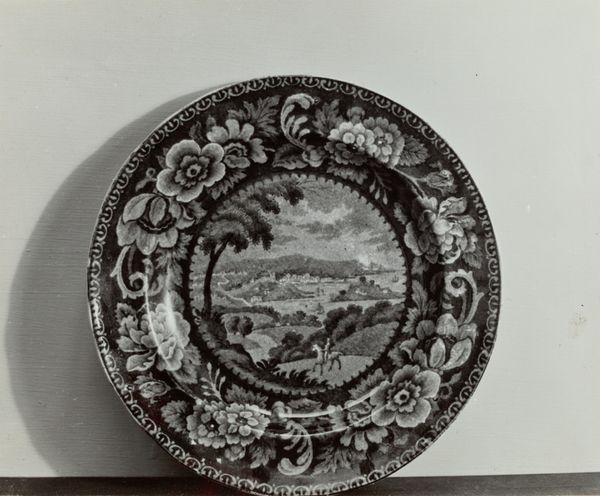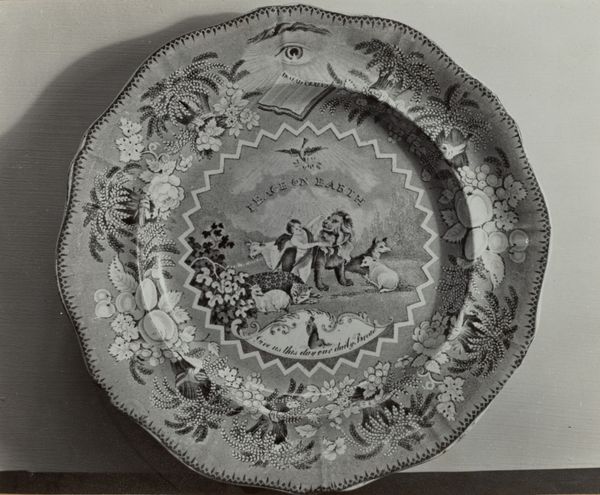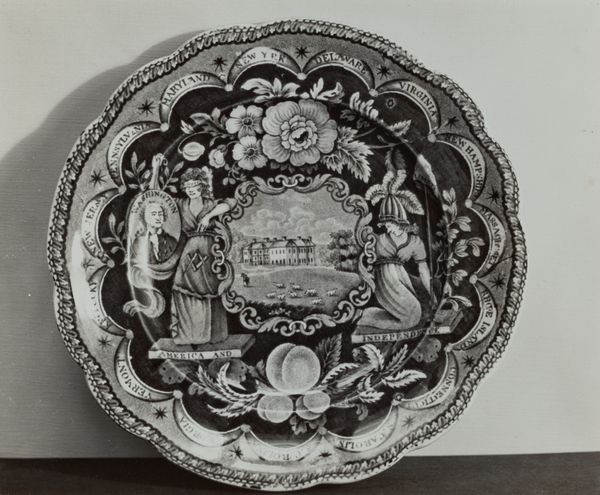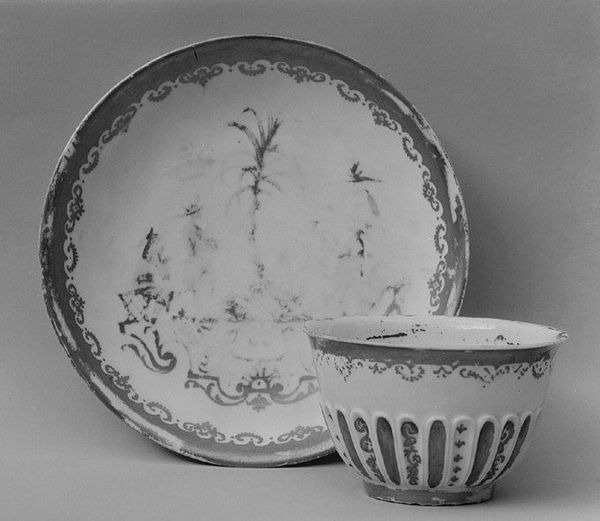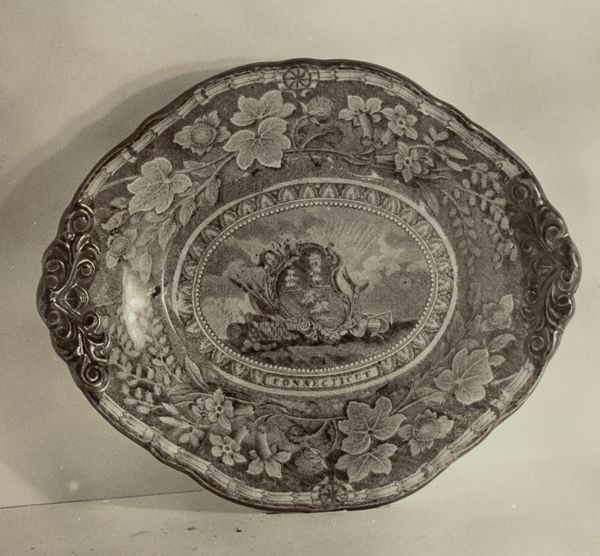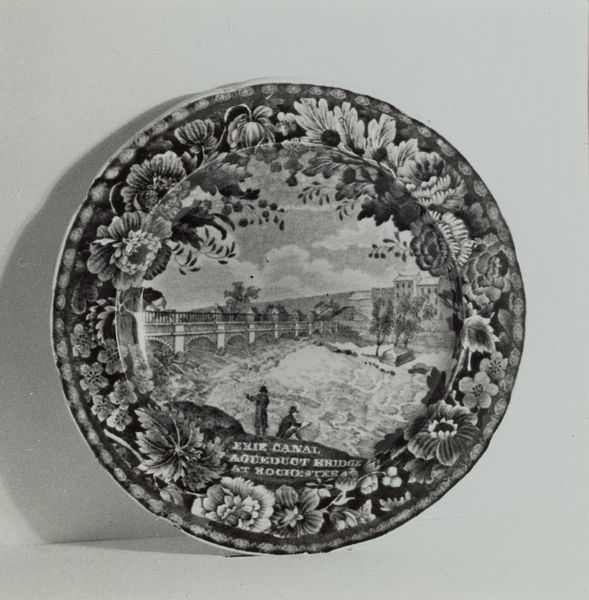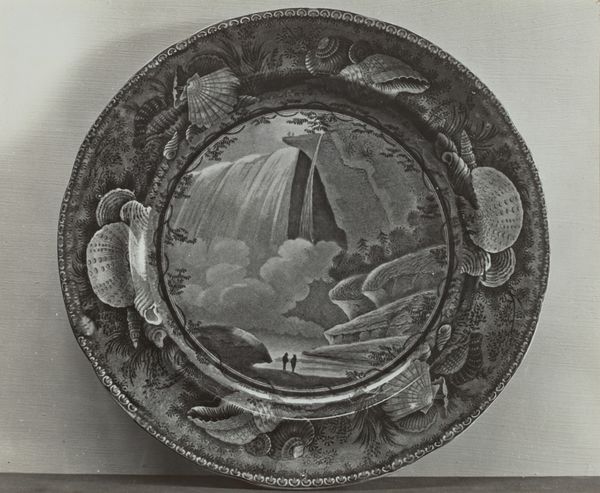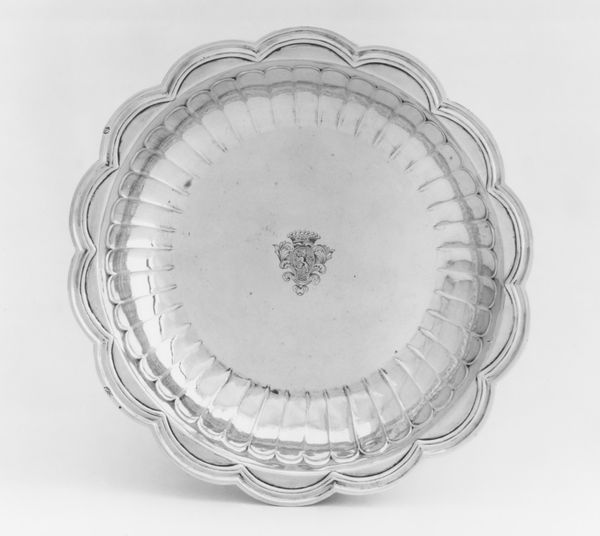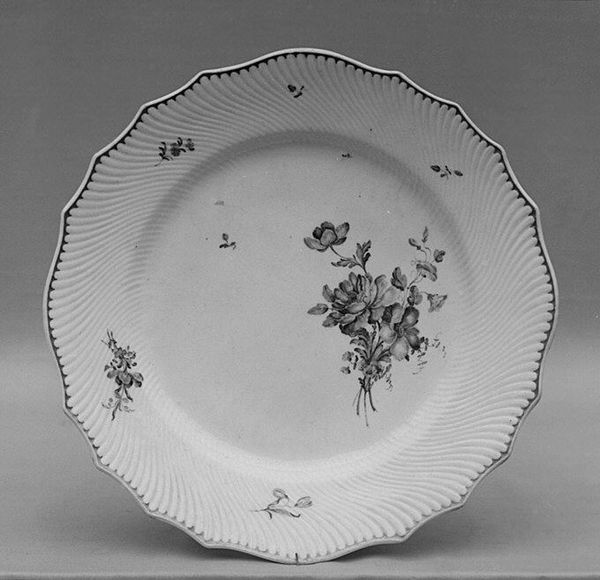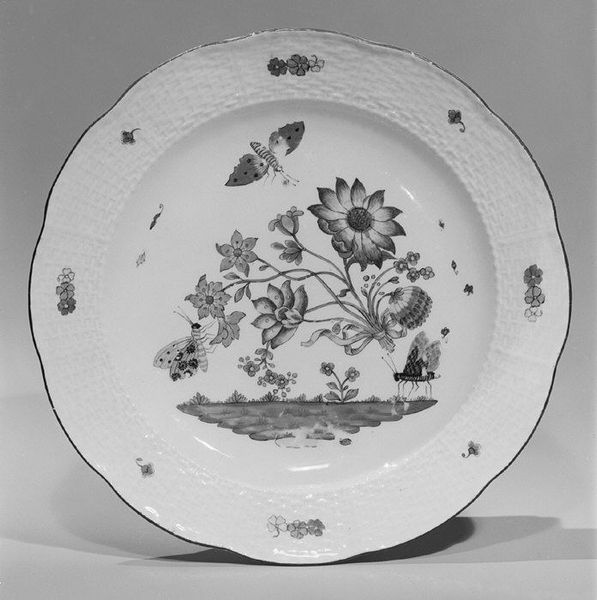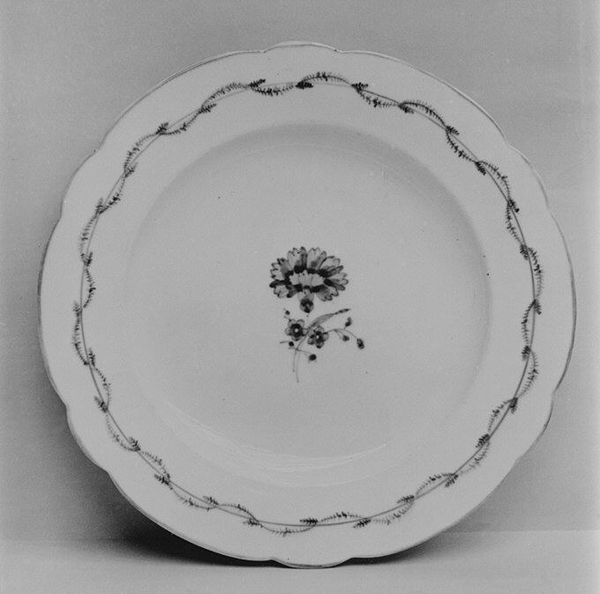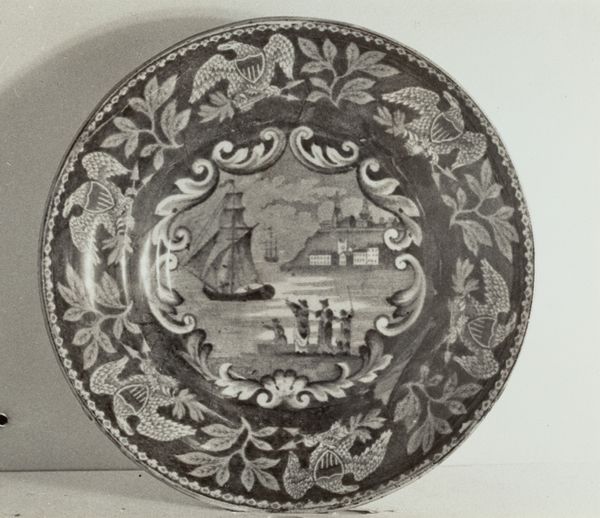
drawing, print, ceramic, earthenware
#
drawing
# print
#
sculpture
#
ceramic
#
earthenware
#
stoneware
#
decorative-art
Dimensions: overall: 20.3 x 25.4 cm (8 x 10 in.) Original IAD Object: 9 1/4" in diameter
Copyright: National Gallery of Art: CC0 1.0
Curator: Let's turn our attention to this plate. It's entitled "Penn's Treaty with the Indians," dating from around 1936. The artist is listed as Helmut Hiatt, and it is a ceramic earthenware piece with printed decorations. Editor: It's quite striking! A scene rendered onto, essentially, a functional object. The somewhat monochromatic rendering creates a starkness that I find both beautiful and unsettling, given the historical implications. Curator: I agree. The choice of a domestic item like a plate to depict a treaty, usually associated with grand historical paintings, is interesting. Earthenware as a medium itself carries connotations of everyday life and accessibility, creating a tension with the gravity of the event. One wonders about the conditions of labor behind its production. Editor: Precisely. By placing this historically significant scene onto an object intended for everyday use, the artist comments on how the memory of that event and its legacy are consumed. It also implies a public responsibility to acknowledge the fraught nature of these interactions between settlers and Indigenous populations. The distribution method and intended audience for the piece become critical here. Curator: The patterned rim certainly seems mass-produced, contrasting with the detailed scene in the center. Hiatt is making an argument about the commodification of history, reflecting perhaps the New Deal art projects which made art more available and thus accessible to the working class. The means of reproducing this scene allow for its dissemination but possibly dilutes its complexities. Editor: Right. It’s the layering of these implications that intrigues me. It also raises questions about cultural representation – who gets to tell the story, and for what purpose? I imagine that access to these ceramics might’ve shifted narratives by embedding them within everyday settings of households in the United States, further popularizing a sanitized and mediated version of this treaty event. Curator: Ultimately, the piece serves as a reminder of how history is not just preserved, but also consumed, circulated, and reinterpreted through objects of daily use. This collision is what shapes the way we relate to historical moments and the forces behind its continued circulation. Editor: Yes, this plate prompts reflection on how collective narratives are created, disseminated, and ultimately, ingrained into the fabric of society itself through objects often dismissed as simply functional.
Comments
No comments
Be the first to comment and join the conversation on the ultimate creative platform.
